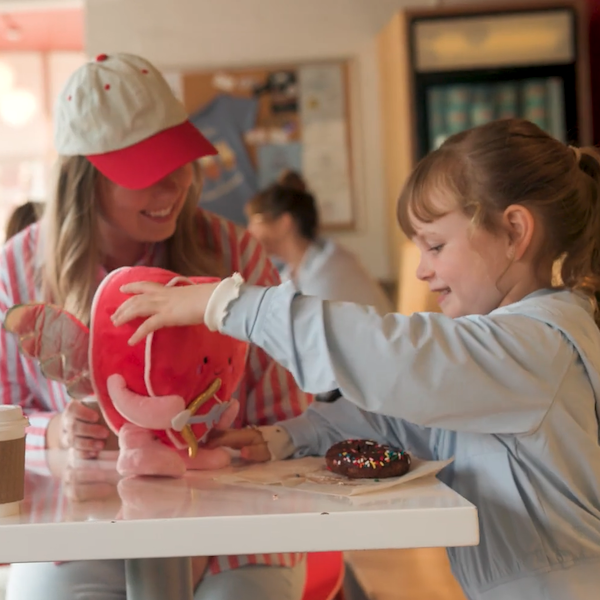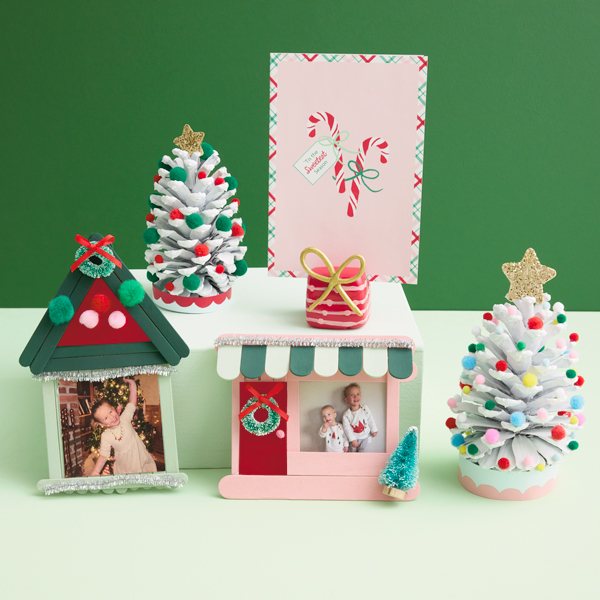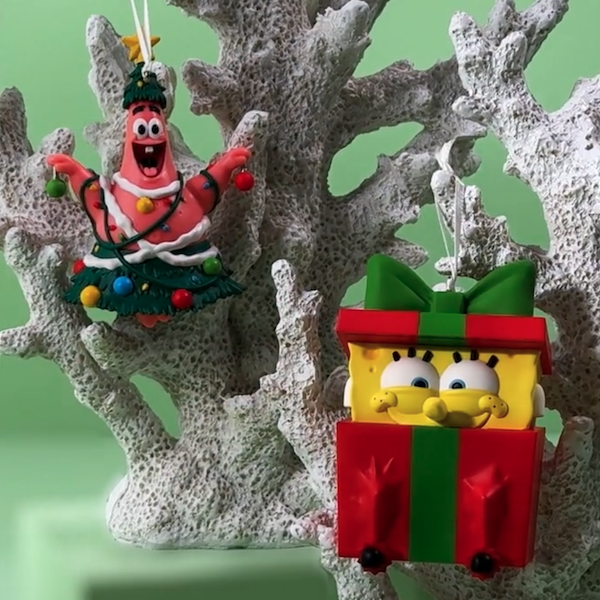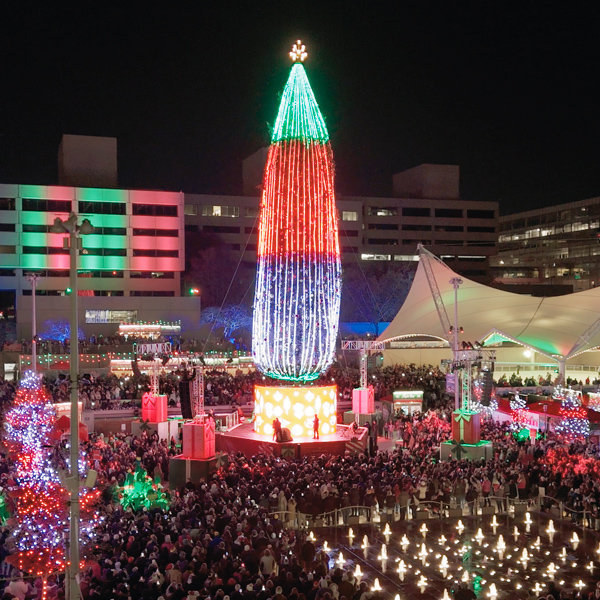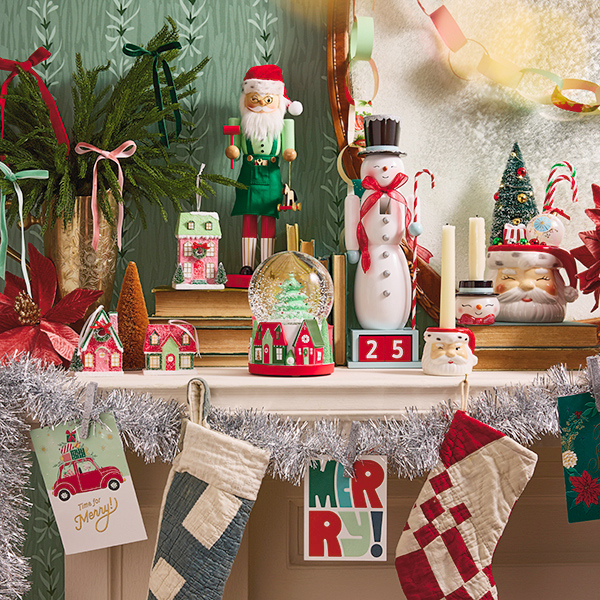Latinx Christmas traditions and holiday celebrations
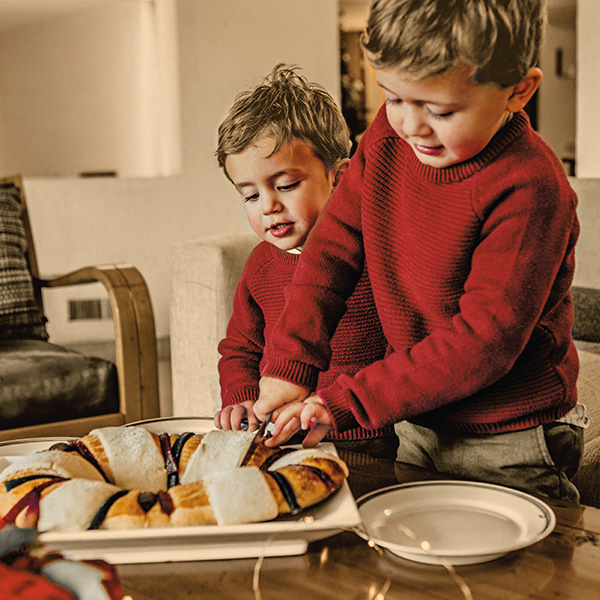
There’s no one way to celebrate Christmas, especially when it comes to Latinx holiday traditions. With over 20 countries encompassing Latin America, holiday festivities in El Salvador are just as distinct as they are in Costa Rica. From the tamal ingredients to the neighborhood caroling, Latinx culture is a vibrant mosaic of unique celebrations. Plus, Latinx families are continually finding ways to add new traditions to the mix.
For this post, Mercedes Lucero talked to friends and family to learn about their favorite Christmas traditions.
Inspired? Create and share by tagging @HallmarkStores.
Tamales are a Christmastime must
Making tamales (corn-based dough with various fillings steamed in corn husks or banana leaves) is a big Latinx holiday tradition. Because preparing these can be complicated and time-consuming, families often form assembly lines to make tamales in big batches.
And you might be surprised to discover that tamale recipes can be pretty unique: Regional influences shape everything from the ingredients to the wrapping.
From a conversation between a group of Hallmark employees:
Lucia S.: For Christmas, we would always cook tamales. But we would cook the Costa Rican tamales, which have the plantain leaf with rice and pork.
Karla H.: In Mexico, those are called corundas.
Lucia: Oh, really?
Carlos A.: Now, in El Salvador, they’re the same tamales, but we don’t put rice in them.
Lucia: Yeah, we put rice, potatoes, carrots, peppers…
Carlos: Pork, but not steak meat. It’s pork meat.
Lucia: Yeah, we do that, too. And, we do chicken, too.
Carlos: And chicken, yeah. But definitely no steak meat and definitely no ciruelas (plums). I married a Cuban. Now I got a different cultural shock. My mother-in-law used to make tamales, but they were not the Central American or Mexican type. So the first time I tried it, I was like, “This is your version of a tamal?” And with that big Cuban accent of hers, she would tell me, “Carlos, if you do not like it, then don’t eat it.”
Celebrations revolve around favorite recipes
While we’re on the subject of food, we might as well let you know that it’s all about holiday recipes. Gathering for a meal is more than a Christmas tradition. It’s about the culture and heritage.
Nathan G.: For me, Christmas is always important because that was the only time during the year when we actually got to have Puerto Rican food. So I was always looking forward to eating as much as I could of arroz con habichuelas (rice and beans), arroz con gandules (rice and pigeon peas) and pasteles (tamales).
Lucia: We cook tamales, and then on my mom’s side, we also make pan de yuca (type of cheese bread) with the mozzarella cheese inside, so it melts. Then we eat them with hot chocolate.
Karla: There is always rompope (an eggnog-like drink). That’s something we always have.
Elizabeth A.: For New Year’s Eve, we eat exactly 12 grapes and make a wish as we eat each one. The 12 grapes are 12 wishes we want to come true in the next 12 months. Another unique tradition is eating pachamanca (traditional Peruvian dish cooked in an earthen oven). It is a meal that is cooked underground using stones, heat and banana leaves to cover the meat and potatoes inside.
Every holiday is an excuse to gather
Many Latinx holiday traditions are opportunities for whole communities to get together. That can make holidays especially difficult for those who aren’t able to celebrate Christmas in their country of origin or who are away from family.
Lucia: Living in the United States, you don’t always feel close to your culture. So that time of year, you’re making all the food, you’re with family, and you’re speaking Spanish, at least for me. We also play cards, so that’s a moment to gather while others are cooking or playing around. That’s how it’s always been.
Nathan G.: It’s funny thinking about it now. My grandma lives in Austin, Texas. Home felt like Austin. Being there was more of where I felt like myself and part of a familial unit. The house was small but 15 people in the house, for me, was fun.
Rosa B.: We have Posadas—celebrations where there is music, traditional food like tamales and atole (hot masa-based drink), and piñatas.
Carlos: In my Salvadorian family, everybody and all the cousins came. Sometimes we would go to someone’s apartment, and it’s so small. You’re in the middle of the winter. It’s 5 degrees outside and inside it’s like 95 degrees because you have 30 people in the apartment.
Idalia A.: We have a parranda, which is where you go to another person’s house during the holidays and sing without them expecting you.

Christmas Eve is the big day
Also known as Nochebuena to many Latinxs, Christmas Eve is a particularly special evening. It can include dinners, gift exchanges and celebrations of faith. Many people attend Misa de Gallo (Midnight Mass) and then return home to sing, dance and gather together.
Nathan: Dinner was late on Christmas Eve. Then, we’d open one present. At my grandma’s house, there’s a massive Last Supper mural looming over us as we do everything. In the home, we always respected Grandma. She’s the most religious. As my grandma has gotten older, it’s more difficult to get out of the house for Midnight Mass, but it’s something we did when we were younger.
Carlos: In general, I think faith and religion do play a big role. The tradition of mass continues. The food continues. The gathering continues. Even though your kids are growing up and creating their own identities, you want to keep those cultural traditions that have been instilled in you.
Elizabeth A.: We wait until midnight on Christmas Eve to open all presents. We also put ceramic animal ornaments underneath the Christmas tree and place Baby Jesus out at midnight to represent when he was born.
Traditions blend and change
Many Latinx cultures continue to celebrate generations of long-held traditions. But some people find themselves adding new traditions along the way. And while some of our stories refer to “Catholic” ceremonies and rituals, many Latinx people living in the United States have converted to Protestantism.
Karla: I have two different stories because I remember Christmas when I lived in Mexico and when we moved to the U.S. Before we moved, we celebrated Los Reyes in Mexico, but you don’t celebrate it until January. When we moved, my parents introduced us to Santa Claus. Over time, we started developing our own traditions in the U.S.
Carlos: We don’t cook tamales, so we end up getting the Chick-fil-A chicken platters on Christmas morning. Now, my children are still wanting Chick-fil-A. A part of you also wants the tradition. The matching pajamas is new. And you adopt it from the American culture, you know? What’s the ugliest pajama that Mom can buy?
Lucia: We started a new tradition of going to a Chinese restaurant. That’s been new since we came to the U.S.
Elizabeth: When the younger cousins started to grow up and since they were born in the USA, they wanted certain foods like KFC mashed potatoes, macaroni and cheese or cheesecake. We now have American and Peruvian dishes at the table.
It’s clear Latinx holiday traditions can mean many different things depending on the circumstance, region or history of the family or community. At the heart of each of these Christmas celebrations, however, there remains not only a sense of pride in one’s heritage but also a love for faith, family and community. New traditions may be added along the way, but Latinx culture will always be carried in the hearts of those who are proud to call it their own.
Read more on traditions at the holidays—whether celebrating another culture or celebrating different faiths in your own family:
- Interfaith holiday celebrations and traditions
- Christmas and Kwanzaa: Keeping family holiday traditions and starting your own
- 80 holiday traditions for your family
- A Christmas tribute: Holiday traditions in memory of lost loved ones
- Photo-worthy holiday tablescapes
- Holiday traditions: Why they matter, how to keep them and how to let them go
Shop Christmas
See allYou may also like
See more-
Valentine's Day Make little hearts happy this Valentine’s Day 💞
Nothing lights up a little one's face like letting them know just how much they're loved. Okay...except for when they...
-
Valentine's Day Valentine's Day gifts for him: 100+ ideas for the boyfriends, husbands, dads and sons in your life
Who’s ready for Valentine’s Day?! 🥰 We absolutely love this holiday and can’t think of a more perfect time to shower ...
-
Calendar Flip Spring Forward: March 2026 Holidays and Observances
Color us excited! From the wearin’ of the green and more sunny fun to colorful Holi festivals and celebrating crayons...
-
Calendar Flip Welcome a New Year: January 2026 Holidays and Observances
HAPPY NEW YEAR! If that hurt your head, you might have celebrated a little too much. When you’re feeling better, we h...
-
Calendar Flip Hello, Love: February 2026 Holidays and Observances
Let’s warm up this cold month with love and connections. From valentine cards to dressing up your pet, this month has...
-
Christmas Christmas gift wrap ideas to match your holiday personality
If you’re anything like me, the holiday season can make you tap into different sides of yourself. Maybe you become th...
-
Gifting 60+ Peanuts® Snoopy gifts to help fans channel their favorite beagle
It was a dark and stormy night in the winter of 2015. I was 17 years old, overwhelmed with AP classes, senior-year st...
-
Christmas 3 Christmas kids craft ideas, plus activities for even more easy holiday fun
From decorating the house to baking cookies, the Christmas season gives us so many opportunities to get creative and ...
-
Christmas The best Christmas gift idea: Bikini Bottom BFFs
Got a bestie who's as silly as you? Or one who's there through all of life's storms with a smile? Then we think this ...
-
Christmas Which Disney Pixar character is your favorite? 🤔
Thankfully, with so many beloved Disney Pixar character Keepsake Ornaments, you won't have to choose a favorite this ...
-
Christmas Not having Cher on your tree? As if! 💅
If you're a Millennial, we predict you will be majorly, totally, butt crazy in love with this Clueless Keepsake Ornam...
-
Christmas 20 vintage Christmas ideas to turn up the charm this holiday season
When I think of my perfect Christmas, vintage vibes are always what come to mind first. Santa’s sleigh in a dreamy wi...
-
Christmas 20+ ideas to help you plan your trip to the Hallmark Christmas Experience
Ever wanted to step inside of a picture-perfect Hallmark Christmas movie? Or travel to a place where you could immers...
-
Christmas Sit fireside with the cutest snowfolks around!
A campfire might seem like the least likely place to find a few snowmen hanging out, but if it's cold enough, even th...
-
Christmas With so much magic, we can’t choose a favorite!
Every Keepsake Ornament is magical, but our ornaments with light, sound and music are in a class all their own. From ...
-
Christmas Stocking stuffer ideas for literally everyone on your list
The stocking stuffer struggle is real. By the time you’ve bought your main presents, you feel like you’re all out of ...
-
Christmas You love Keepsake Ornaments…we love rewarding you! 🥳
Collecting Keepsake Ornaments isn't just a hobby for you—it's a passion! And that kind of enthusiasm is something we ...
-
Christmas 60+ Christmas decorating ideas to deck your halls—and every other space!
If you’re searching for Christmas decorating ideas to make all your spaces extra jolly and put you in a merry mood, y...
-
Christmas Dance your way to Christmas morning 🦛🎄
Keep little ones giggling and grooving all holiday break-long with this musical dancing Christmas hippo plush! Does i...
-
Winter Lean into the Season: winter ideas to make the season bright and extra cozy
There are two types of people in this world: those who love winter and those who’d endure an eternity of wearing wet ...

